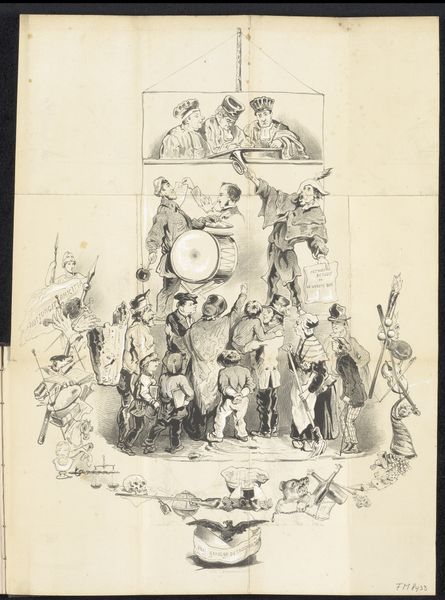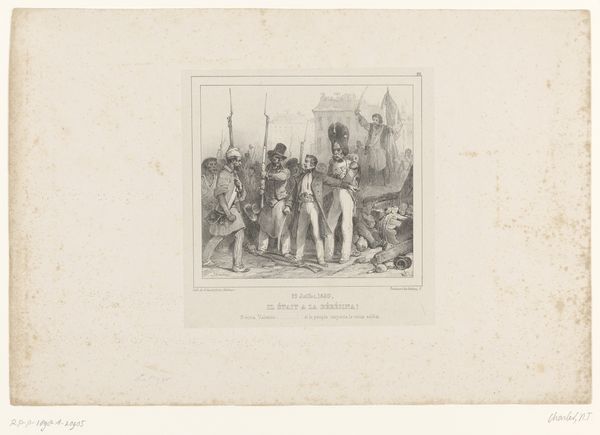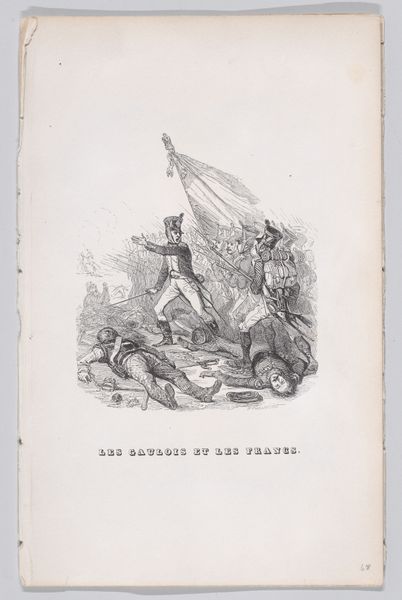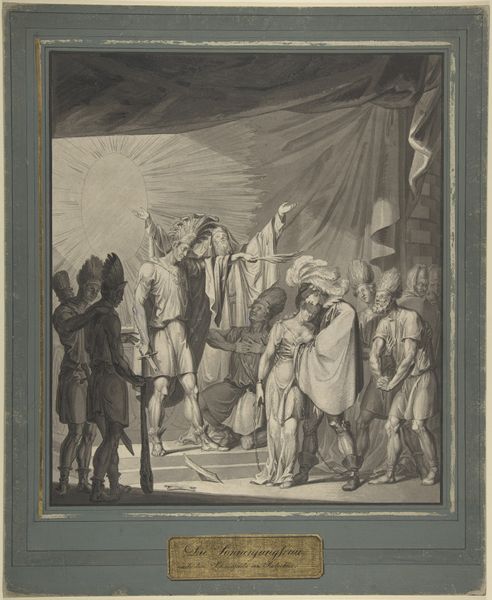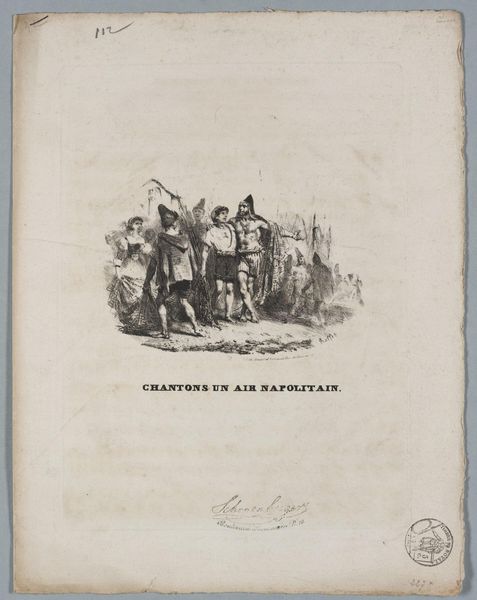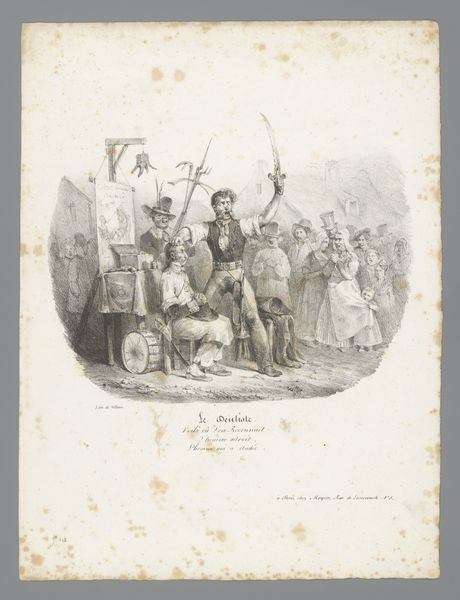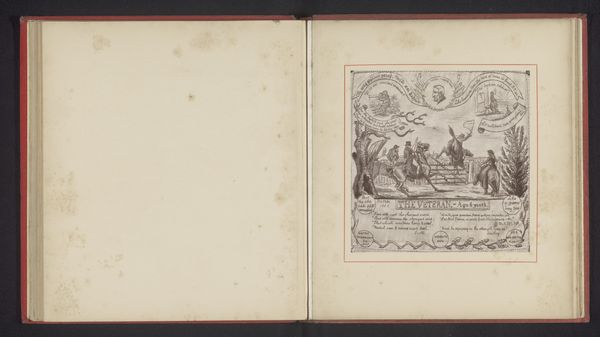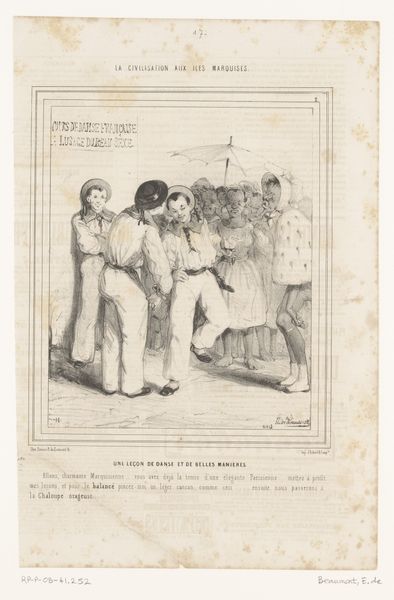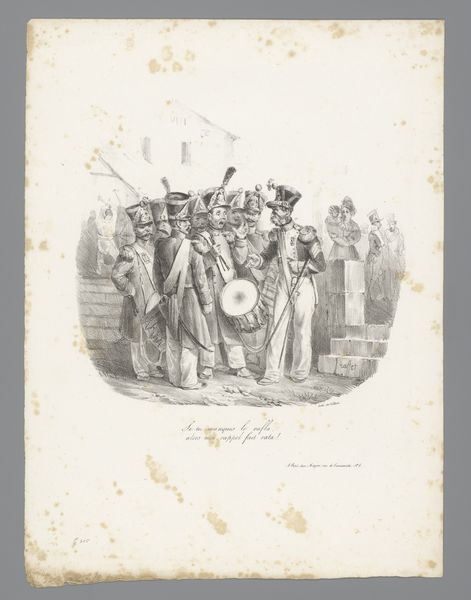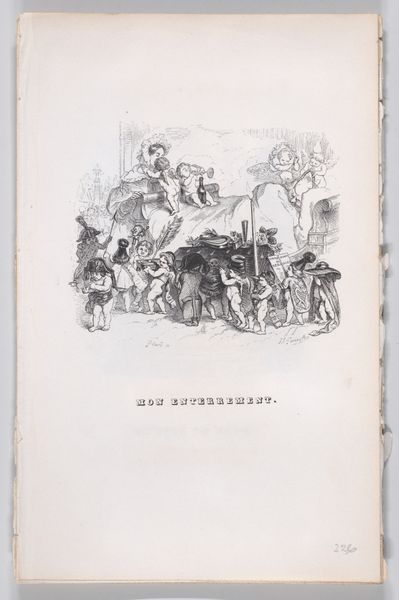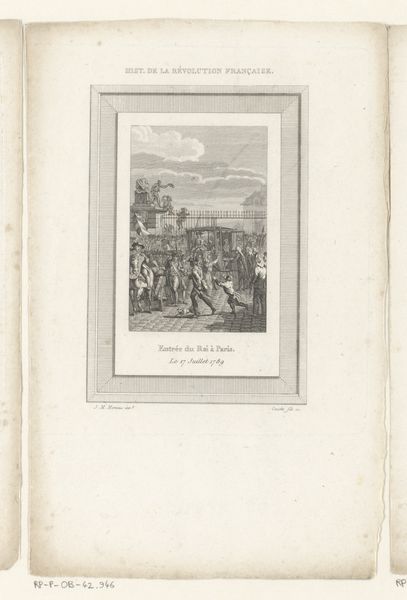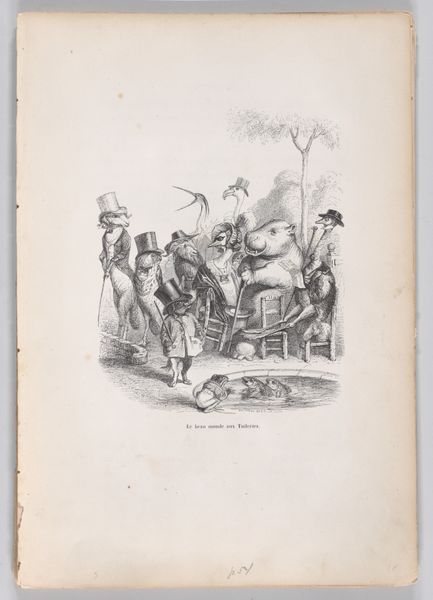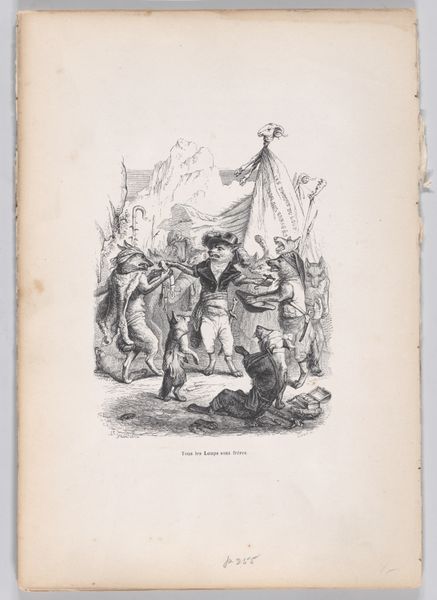
The Great Eastern Weighing Anchor Off the Maplin Sands at the Nore, July 15, 1865 1865 - 1866
0:00
0:00
Dimensions: Image: 8 3/4 × 6 3/16 in. (22.3 × 15.7 cm) Sheet: 14 1/2 × 10 3/4 in. (36.8 × 27.3 cm)
Copyright: Public Domain
Curator: We're looking at Robert Charles Dudley's "The Great Eastern Weighing Anchor Off the Maplin Sands at the Nore, July 15, 1865," a print made between 1865 and 1866, now residing at the Metropolitan Museum of Art. It incorporates etching and watercolor. Editor: It immediately strikes me as chaotic yet grand, with this seething mass of figures and then those looming masts, hinting at something truly massive at play. A romantic and even overwrought scene, to be sure. Curator: Absolutely. Consider how the artist uses a high vantage point and carefully graded light to communicate the immense scale of the ship and the almost ant-like quality of the men struggling with the anchor. The dynamism here isn’t accidental; it mirrors the monumental endeavor of transatlantic communication itself, reflected in "The Atlantic Telegraph" headline. Editor: I'm curious about the workers depicted. They’re mostly presented as a singular laboring body, faceless in many ways. While the artwork is “Dedicated by Special Permission to His Royal Highness Albert Edward, Prince of Wales”, I’m wondering whose story is it really telling? Who profits from technological advancements? It makes me think about the human cost of progress during that era of colonialism. Curator: That’s a key point to interrogate. You can interpret this as an articulation of collective labor. The print effectively emphasizes how essential the coordination and unified muscle of working-class people were to powering Britain's imperial ambitions. But you're correct to also view it through lenses of exploitation and class hierarchy; these bodies were expendable. Editor: Indeed. And, although it documents the progress, one may consider whether it also naturalizes some of its social injustices. Is this aesthetic celebration distracting from these conditions? Is that violin player just aesthetic? I can't tell. Curator: I'm inclined to think yes, at least partly, and consider also how prints circulated widely, reinforcing narratives to very diverse audiences. That violin player, as you call them, may also function as symbolic hope to keep morale afloat. Editor: Interesting to ponder the layers of this work – the formal arrangement serving to either emphasize collaboration or to obfuscate power. I’m left with a heightened sense of both wonder and discomfort, as the sublime achievements of Victorian engineering mask something less glorious beneath. Curator: I appreciate how it makes me reconsider not just what the print depicts, but how Dudley wants the British public to interpret these pivotal historical narratives about modernity at a very specific moment in time.
Comments
No comments
Be the first to comment and join the conversation on the ultimate creative platform.
